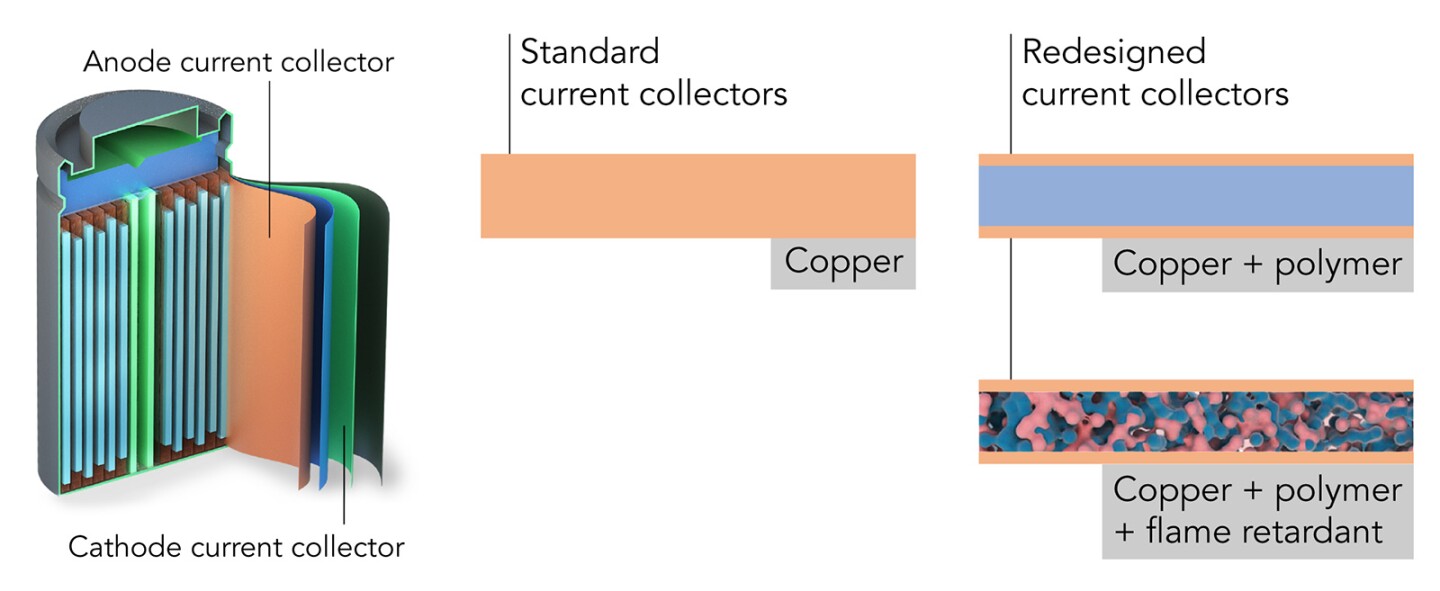Polymer sandwich current collector boosts battery density, quells fire
Battery researchers are continually experimenting with alternative materials in an effort to boost performance, and a group from Stanford University and SLAC National Accelerator Laboratory is claiming to have landed on a winner. The team has redesigned the current collector component of lithium-ion batteries in a way that greatly reduces their weight, making them not only more efficient but also more resistant to fires.
Lithium-ion batteries feature a pair of current collectors, which work with the device’s two electrodes to distribute the current flowing in either direction. Today’s current collectors are typically made from sheets of copper or aluminum foil, which makes them one of the battery’s heaviest components, sometimes accounting for as much as 50 percent of the overall weight of the device.
Therefore, considerable performance improvements are to be gained by making these components and in turn the batteries themselves, lighter. This would enable them to store more energy per unit of weight, which would reduce the load an electrical vehicle has to carry with it, for example, allowing them to travel farther on each charge.
Previous approaches to this problem have involved tweaking current collectors to make them more porous or thin, as a way of cutting weight. But these have led to batteries that are more fragile, are chemically unstable or need to be compensated for by adding more electrolyte material, which makes them more costly.
The team from Stanford University and SLAC National Accelerator Laboratory were experimenting with another material entirely, a lightweight polymer called polymide. This was integrated with a fire retardant called triphenyl phosphate, or TPP, with the material then coated on either side with a very thin sheet of copper.

Yusheng Ye/Stanford University
This sandwich design reduced the weight of the current collector by 80 percent compared to typical designs. In terms of energy density, the team calculates that this translates to gains of 16 to 26 percent.
“The current collector has always been considered dead weight, and until now it hasn’t been successfully exploited to increase battery performance,” said Yi Cui, a professor at SLAC and Stanford and investigator with the Stanford Institute for Materials and Energy Sciences (SIMES) who led the research. “But in our study, making the collector 80% lighter increased the energy density of lithium-ion batteries – how much energy they can store in a given weight – by 16-26%. That’s a big jump compared to the average 3% increase achieved in recent years.”
The copper sheet is also able to distribute the current as well as regular current collectors, while protecting the polymer and fire retardant.
The team then carried out some experiments to assess the battery’s flammability, alongside ones featuring today’s commercially available current collectors. Both types of devices were exposed to open flames, with the today’s design catching fire and remaining alight until the electrolyte had entirely burned away. Meanwhile, the fire failed to really catch on with the new design, with the flames going out within seconds.
With a patent application already filed for the current collector, the researchers now hope to work with battery manufacturers to incorporate it into next-generation designs. Working in their favor is the fact that the collector is easy and cheap to produce, so scaling up to commercial production “should be very doable,” according to lead investigator Yi Cui.
The research was published in the journal Nature Energy.
Source: National Accelerator Laboratory
Read More: Polymer sandwich current collector boosts battery density, quells fire

